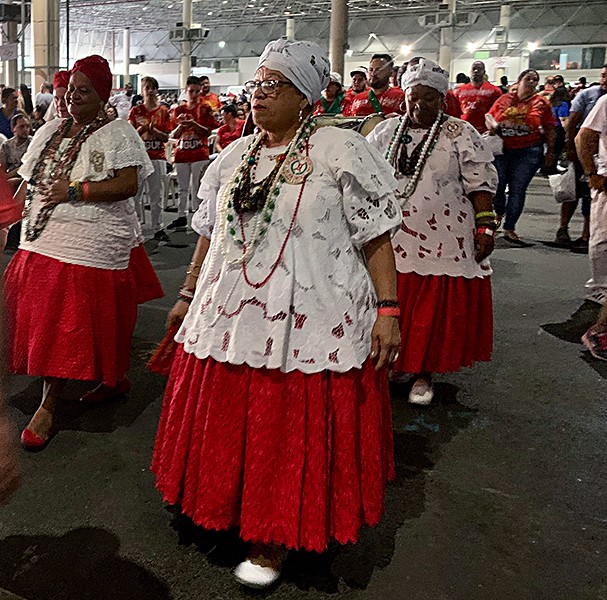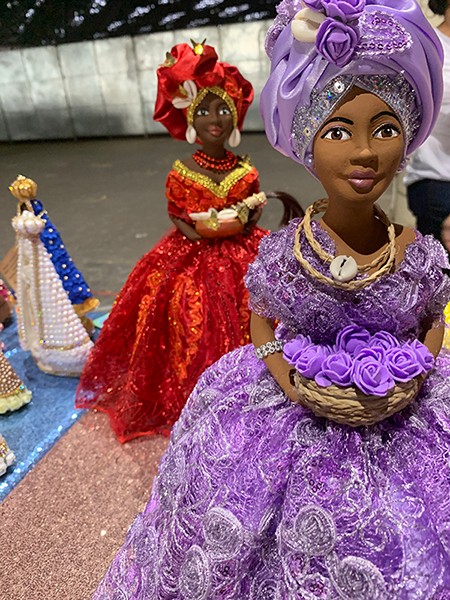WHAT IS "AFRO-ATLANTIC"
5.7
"The changing same"
Concluding this chapter, we look to the Afro-Atlantic as a world of transformation and continuity. Its traditions evolve, yet their African roots endure. Paul Gilroy calls this tension the changing same – a concept that captures how continuity and change intertwine to shape culture across time and space.
At the end of this chapter, let us circle back to the concept of the Black Atlantic. Paul Gilroy uses the phrase “The Changing Same” to capture the variations of ideas and traditions stemming from comparable African origins. Gilroy observes:
On the most elementary level, these plural forms make the abstract concept of a changing same a living, familiar reality…..The relationship of the listener to the text is changed by the proliferation of different versions. Which one is the original? How does the memory of one version transform the way in which subsequent versions are heard and understood? The components of one mix separated and broken down can be more easily borrowed and blended to create further permutations of meaning. (Gilroy 106)
As the preceding steps have shown, there are various phenomena that arise from the intermixtures of African traditions. They result from forms of cultural exchanges, they evolve from the physical mobility of people and artefacts, and they spread through digital transmission and adaptation. All in all, they highlight how traditions respond to new influences.

Intermixtures: Mães de santo (mothers of the saint) arrive for the ceremony Se Meu Pai é Ogum (If My Father is Ogum), honouring the Orixá Ogum. In Yoruba tradition, Ogum is the blacksmith and linked to both war and agriculture. The ceremony also marks St George’s Day. St George, a warrior saint with Cappadocian Greek origins, is highly venerated in Catholicism. In Brazil, African-derived religions such as Umbanda and Candomblé honour both figures on 23 April. Image: Zainabu Jallo, São Paulo, Brazil, 2019.
The Afro-Atlantic is dynamic. Cultural practices transform, but important parts of their origins remain. This creates a strong interplay between tradition and innovation – a changing same.
Exploring Afro-Atlantic expressions helps us grasp performative resilience. It also shows how traditional practices are repeated and how identities are constantly renegotiated in today’s interconnected world.
Figures: Decorative dolls that embody the blend of African and Indigenous Brazilian spiritual traditions. Image: Zainabu Jallo, São Paulo, Brazil, 2019.
Several scholars have explained this through different ideas. One of them is the term creolisation. In 1968, the Jamaican author Brathwaite was among the first to describe “creolisation” as “a way of seeing the society, not in terms of black and white, master and slave, in separate units, but as constituent parts of a whole” (Brathwaite 307).
Édouard Glissant, a major voice in Caribbean intellectual thought and Francophone literature, developed this concept further. He writes:
Creolisation as an idea is not primarily the glorification of the composite nature of a people: indeed, no people has been spared the cross-cultural process. The idea of creolisation demonstrates that henceforth it is no longer valid to glorify “unique” origins that the race safeguards and prolongs. In Western tradition, genealogical descent guarantees racial exclusivity, just as Genesis legitimises genealogy. To assert peoples are creolised, that creolisation has value, is to deconstruct in this way the category of “creolised” that is considered as halfway between two “pure” extremes. (Glissant 140)
Glissant emphasises that creolization is not the same as assimilation or acculturation. Instead, it is an inherently creative process. It embraces diversity and remains open and receptive. Creolised, or composite, cultures are “born of history.” They do not rely on a fabricated myth.
Gilroy’s idea of “the changing same” calls for a lenticular understanding of Afro-Atlantic expressions. By this he means a dual focus: one that moves past regional differences, yet also acknowledges the historical, cultural, and political ties that bind them.
He uses this argument to challenge the view of Afro-Atlantic identities as fixed or essentialised. Instead, he shows them as dynamic and evolving realities, shaped by historical and social forces. Cultural expressions play indispensable roles in this ongoing transformation. This concept resonates with the notion of creolisation.
Taken together, the preceding steps have shown that key characteristics endure even amid ongoing change. Historical elements continue to shape contemporary cultural expressions.
This chapter, by tracing different facets of Afro-Atlantic identity, brings out the vibrancy of this cultural centre and reaffirms its lasting significance in a global context.
Author: Zainabu Jallo
References
Brathwaite, K. (1997). The Development of Creole Society in Jamaica, 1770-1820. Oxford: Clarendon.
Gilroy, P. (1999). The Black Atlantic as a Counterculture of Modernity. In The Black Atlantic: Modernity and Double Consciousness. Verso Books.
Glissant, É. (1989). Caribbean Discourse: Selected Essays. Charlottesville: University of Virginia.

